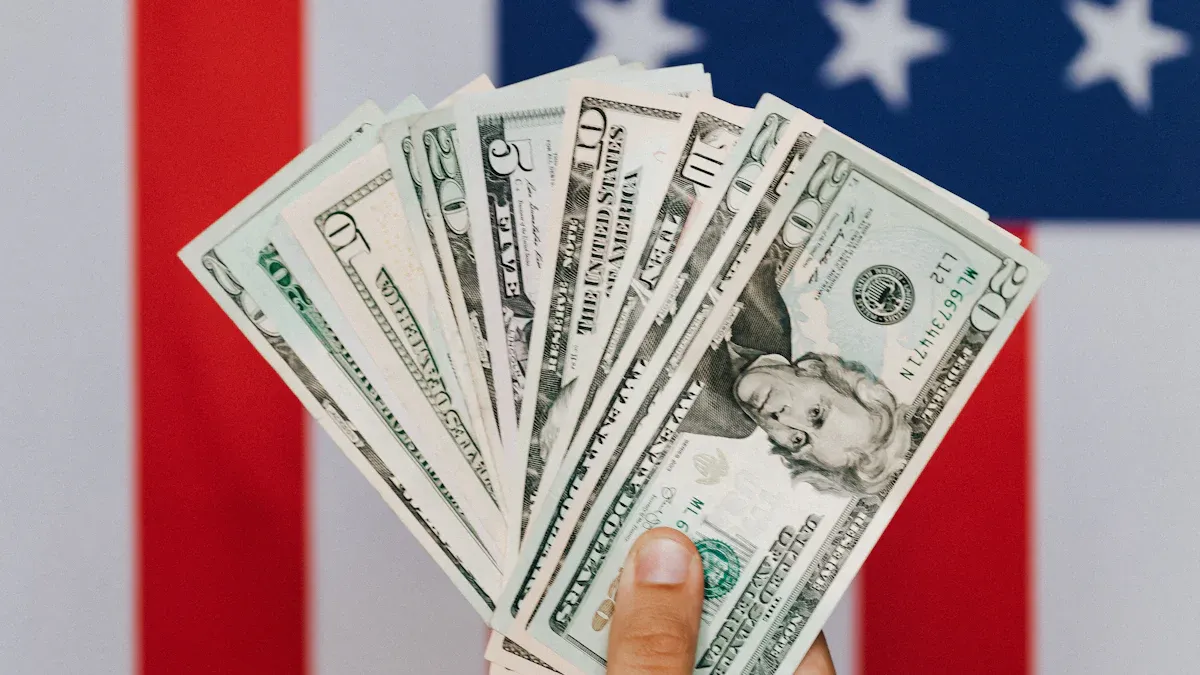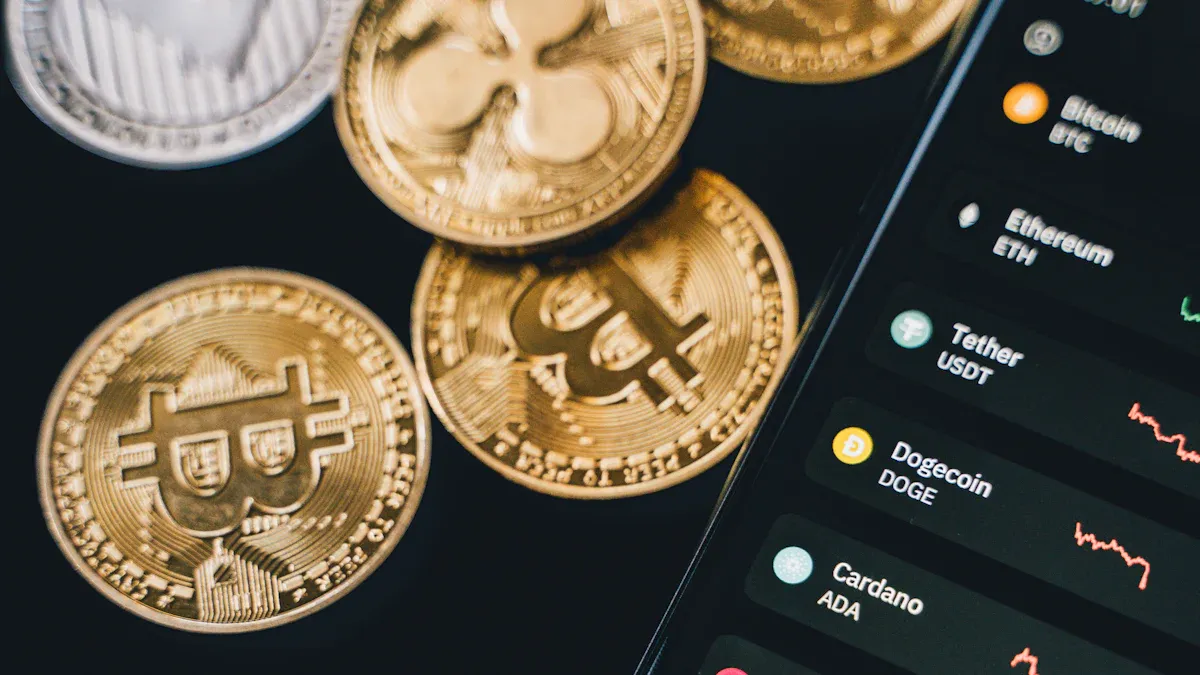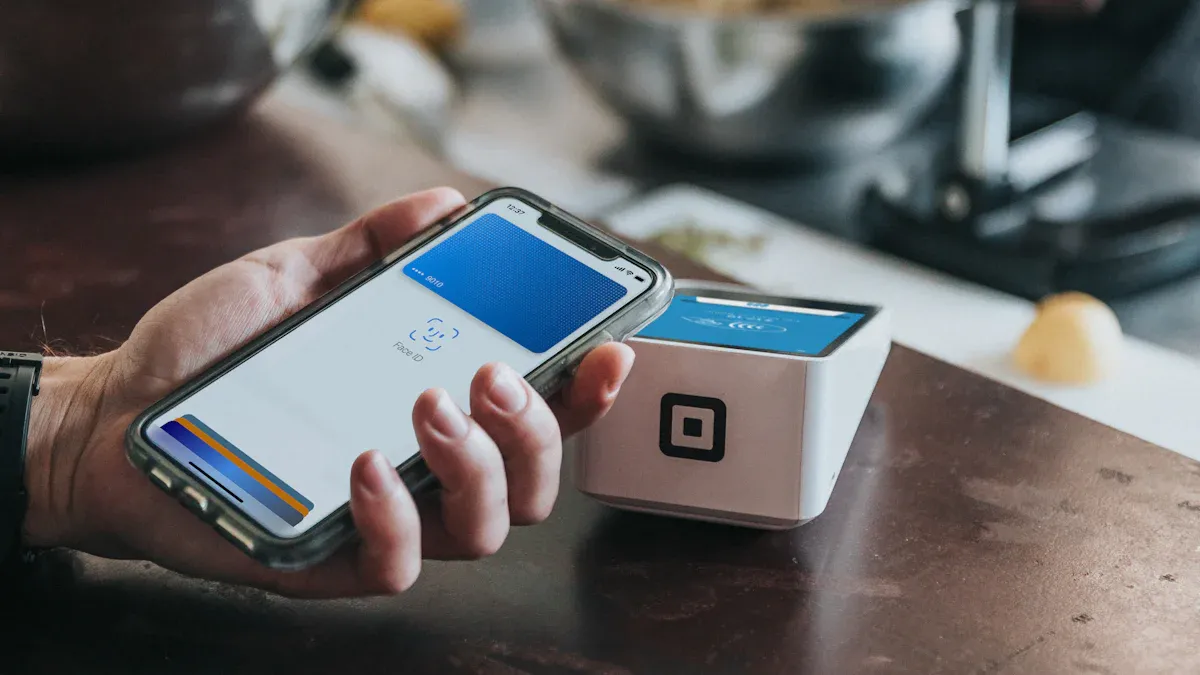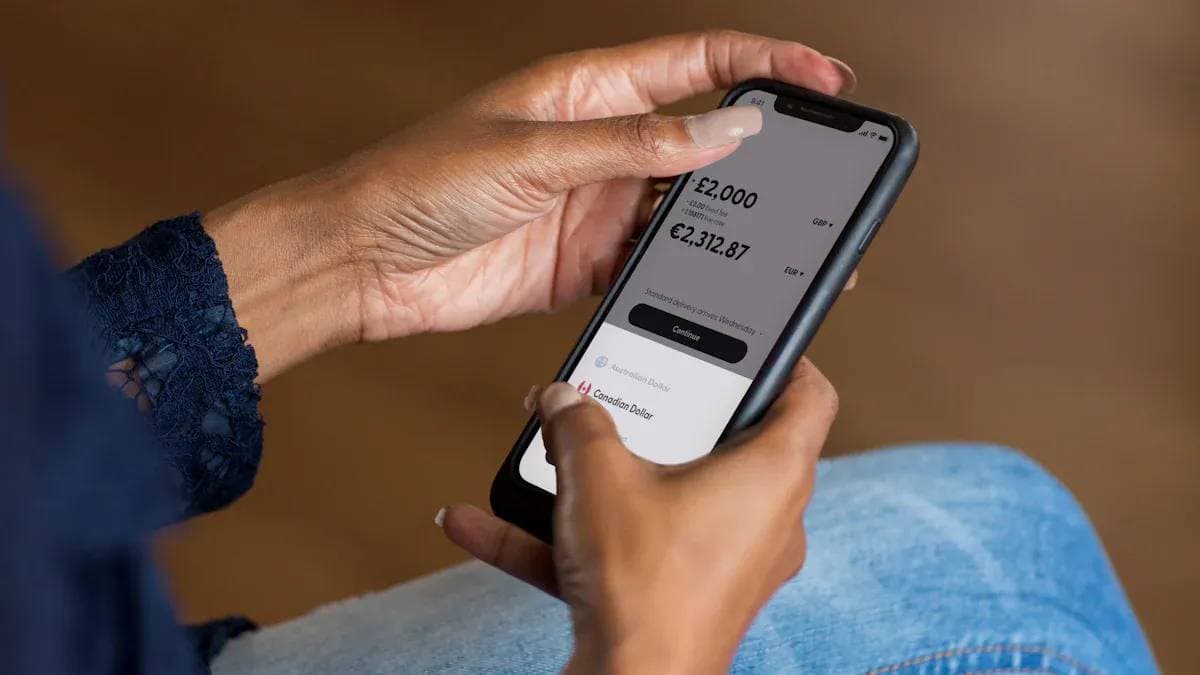- EasyCard
- Trade
- Help
- Announcement
- Academy
- SWIFT Code
- Iban Number
- Referral
- Customer Service
- Blog
- Creator
Beginner's Guide to Stablecoin Remittances: How to Send Your First USDT Transfer to Overseas Family and Friends

Image Source: pexels
The global crypto payment market is expected to grow to $20 billion in 2025. This signals that a faster, cheaper remittance method is becoming mainstream. Have you ever thought that traditional bank wire transfers might charge up to 6.35% in fees?
By using stablecoin (USDT) for international remittances, you can reduce this fee to below 3%. For families with students abroad, this could mean saving thousands of dollars annually.
USDT can be simply understood as a “digital dollar.” It brings the value of the USD onto the blockchain, making transfers as easy as sending a message.
Key Takeaways
- USDT remittances are faster and cheaper than traditional bank transfers, saving significant costs.
- Before remitting, install an exchange app, complete identity verification, and obtain your family/friend’s USDT receiving address.
- When buying USDT, choose highly reputable C2C merchants, pay using your real-name verified account, and never mention cryptocurrency in payment notes.
- When sending USDT, carefully verify the receiving address and select the TRC-20 network, ensuring both match exactly.
- After your family/friend receives USDT, they must sell it via the C2C market to convert to local currency and confirm receipt before releasing USDT.
Preparations Before Starting
Before beginning your first USDT remittance, you need to complete a few simple preparation steps. This is like preparing your passport and visa before traveling abroad. Don’t worry—the entire process is straightforward, and we’ll guide you step by step.
1. Install an Exchange App
First, both you and your family/friend need to install a cryptocurrency exchange app on your phones. Think of it as a “digital currency bank” where you’ll buy and send USDT.
There are many reliable exchanges available. For beginners, Coinbase is highly praised for its clean interface. If you want more coin options, Crypto.com, with over 350 cryptocurrencies, is also a great platform.
Important Tip: Ensure both you and the receiving family/friend have registered exchange accounts. One person cannot complete the entire remittance process alone.
2. Complete Identity Verification (KYC)
After installing and registering the app, you need to complete identity verification, known as KYC (Know Your Customer). This is a standard process set by all legitimate exchanges to comply with anti-money laundering regulations and secure accounts.
You need to prepare the following materials for verification:
- Government-issued ID: Such as a passport or driver’s license.
- A selfie photo: The app will guide you to take a real-time selfie via your phone camera to confirm it’s you.
- Proof of address: Some platforms may require it, such as a recent utility bill or bank statement.
This process usually completes review within minutes.
3. Obtain Your Family/Friend’s Receiving Address
This is a crucial step in the preparations. You need your family/friend to log into their exchange app and find the USDT receiving address. This address is like a bank “account number”—a long string of letters and numbers.
The process to obtain the address is usually:
- Your family/friend logs into their exchange app.
- Go to the “Assets” or “Wallet” page.
- Select the “Deposit” or “Receive” function.
- Choose the coin USDT.
- Select a transfer network (we’ll explain in detail in the next step).
- Copy the generated receiving address and network name, then send them to you.
Security Warning: The receiving address and network type must be completely correct. A single character error could result in permanent loss of your funds. Always obtain via copy-paste and double-check repeatedly.
Step 1: Buy USDT

Image Source: pexels
Now, your preparations are complete. The next step is to convert your local currency (such as RMB) into USDT. This process happens in the exchange’s C2C trading zone. Think of C2C as a “digital currency Taobao”—you buy directly from other users (merchants), and the exchange acts as a guarantor to ensure transaction safety.
1. Enter the C2C Trading Zone
First, locate the C2C trading function. Using Binance (the world’s largest exchange by volume) as an example, the process is very similar across most mainstream exchanges.
- Open your exchange app and log in.
- On the homepage, find the “Buy Crypto,” “C2C Trading,” or “Quick Buy” entrance.
- Click to enter a marketplace with numerous merchants.
What is C2C Trading? C2C stands for “Customer-to-Customer.” In this model, you trade with verified merchants on the platform, not directly with the exchange. This method is flexible and supports various local payment options.
2. Select USDT and Payment Method
After entering the C2C market, you’ll see a list of merchants. Filter to find the best match for you.
- Select Coin: Ensure you’re under the “Buy” tab and the coin is USDT.
- Enter Amount: Input the fiat amount you want to buy; the system auto-filters merchants matching that range.
- Choose Payment Method: Select based on preference. Common options include:
- Alipay
- WeChat Pay
- Bank card transfer
The most critical step is choosing a safe, reliable merchant. C2C trading is convenient but carries risks, such as disputes or delays. Therefore, learning to identify quality merchants is essential.
Beginner Pitfall Guide: How to Choose Reliable C2C Merchants? Platforms display merchant credibility via indicators. When selecting, focus on:
- High Completion Rate: Look for merchants with 98%+ completion rates. This means they rarely cancel orders.
- High Trading Volume: Choose merchants with many “total orders” or “30-day orders,” e.g., thousands of completed trades indicate professionalism.
- Positive Reviews: Check user rating percentages.
- Average Release Time: Shows how quickly merchants release USDT after payment. Choose short times (e.g., 1-5 minutes) for better experience.
- Certification Badges: Platforms grant special badges (e.g., yellow V, diamond) to merchants with deposits and stricter reviews—they’re safer.
3. Pay the Selected Merchant
After selecting a merchant and clicking “Buy,” you enter the formal transaction.
- Generate Order: Input the exact amount (e.g., 1000 USD equivalent in fiat); the app calculates USDT quantity. Confirm to generate an order.
- Get Payment Details: On the order page, view merchant’s payment info, e.g., Alipay QR code or bank card number.
- Complete Payment: Use your own payment app (e.g., Alipay, mobile banking) to transfer to the merchant’s account.
⚠️ Payment Safety Warning
- Real-Name Match: Use your real-name verified payment account. Using another’s account allows the merchant to refuse and appeal.
- No Notes: Never include “USDT,” “Bitcoin,” “cryptocurrency,” etc., in transfer remarks. This may trigger risk controls. Leave blank or follow merchant instructions.
After payment, return to the exchange app and click “I have completed payment, notify seller” on the order page. This is crucial—it starts a countdown reminding the merchant to check and release USDT.
4. Wait for Merchant to Release USDT
After notifying, just wait patiently. Your USDT is “escrowed” or “locked” by the platform. Once the merchant confirms receipt, they release it via the app, and USDT instantly enters your exchange account.
This is usually fast. Reputable merchants release in 1-5 minutes.
If over 10-15 minutes without release, contact via order chat first. If unresponsive, click “Appeal”; platform support intervenes, verifies your proof, and forces USDT transfer.
Congratulations! After this, your exchange “funding account” holds your first USDT. Next, the exciting part—send this “digital dollar” to your overseas family/friend.
Step 2: Initiate Stablecoin (USDT) International Remittance

Image Source: unsplash
You’ve successfully converted local currency to USDT, now sitting in your exchange account. Now, the core, most thrilling step: send this “digital dollar” across borders to your distant family/friend. This is very quick but requires absolute care.
1. Find Withdrawal Function from Funding Account
Purchased USDT is usually in the exchange’s “Funding Account” or “Spot Account.” First, locate the “Withdraw” function. Interfaces vary slightly, but logic is consistent.
Most exchanges’ withdrawal process:
- Log into your exchange app.
- Navigate to “Assets” or “Wallet” page.
- Find USDT in your assets, click “Withdraw” or “Send”.
- Enter withdrawal page to start transfer.
Tip: Some exchanges require transferring USDT from “trading” to “funding” account first for withdrawal. This internal transfer is instant with no fee.
2. Paste and Verify Receiving Address
This is the most error-prone step requiring full attention. From preparations, you have your family/friend’s USDT address. Fill it accurately on the withdrawal page.
- Paste Address: Copy the full long address from your family/friend and paste into the “Address” field.
- Double-Check: After pasting, confirm accuracy with your family/friend again. Check first and last few characters.
⚠️ Asset Safety Red Line: Address Must Not Be Wrong! Blockchain transfers are irreversible. Sending to a wrong address means no one (including exchange support) can recover—funds lost forever. Verify like a bank account, but more carefully!
For added security, many exchanges offer “Withdrawal Address Whitelist”. Add your family/friend’s frequent address to the whitelist. Once enabled, withdrawals are only to pre-approved addresses, preventing mistakes or theft to unknown addresses.
3. Select TRC-20 Transfer Network
Below the address, you’ll see “Transfer Network” or “Chain Name.” This is another key to successful arrival.
Select the TRC-20 network.
Why TRC-20? Think of it as choosing express companies. Some are expensive and slow, others economical and fast. For stablecoin (USDT) remittances, TRC-20 is the most efficient and cheapest.
- Extremely Low Fees: TRC-20 transfer fees are usually fixed around 1 USDT, far below other networks’ $5-15.
- Extremely Fast: Transactions are near-instant. Your family/friend usually sees USDT in 1-3 minutes.
See the stunning speed difference between stablecoin transfers and traditional wires:
| Feature | SWIFT / Bank Transfer | Stablecoin (USDT, TRC-20) |
|---|---|---|
| Settlement Time | 2-5 business days | Seconds or minutes |
🚨 Ultimate Safety Warning: Networks Must Match! Your chosen network must exactly match the one your family/friend used for the address. If they gave a TRC-20 address, you must send via TRC-20. Wrong network = funds permanently lost, same as wrong address.
4. Enter Amount and Confirm Transfer
Now, all key info is set. Final step: enter amount and complete verification.
- Enter Amount: Input USDT quantity in the “Amount” field. You’ll see “Network Fee” (usually 1 USDT) and final “Received Amount.”
- Confirm Info: Before clicking “Withdraw,” check all screen info one last time: address, network (TRC-20), amount.
- Security Verification: After clicking “Withdraw,” the exchange requires verification to confirm it’s you:
- Email code
- SMS code
- Google Authenticator (2FA)
After all verifications, your stablecoin (USDT) international remittance is sent! Check status in withdrawal history. Usually, “Completed” or “Success” in minutes.
Post-KYC accounts have high withdrawal limits, e.g., up to 250,000 USDT daily, more than enough for most family needs.
Congratulations! You’ve mastered this efficient, low-cost cross-border skill. Notify your family/friend to check for this near-instant arrival!
Step 3: Your Family/Friend Receives Funds Overseas
When your transfer status shows “Completed,” USDT has arrived in your family/friend’s exchange account. Now, their final step: convert this “digital dollar” to usable local fiat. This is also simple and fast.
1. Check USDT Arrival in Exchange App
Your family/friend will soon get a USDT arrival notification in their app. For certainty, double-confirm.
Send them the transfer’s “Transaction Hash” (TxID)—a unique ID like a tracking number. Since we used TRC-20, they can input TxID on the blockchain explorer (e.g., TRONSCAN) to view details.
What is a Blockchain Explorer? It’s a public ledger site where anyone can view every on-chain transfer. Key terms explained:
Term Description Transaction Hash (TxID) Unique ID to confirm transfer success. Status “Confirmed” means transaction complete. Recipient Address Family/friend’s wallet address for verification.
2. Sell USDT via C2C Trading
After confirming arrival, your family/friend sells USDT on the C2C market for local currency (e.g., USD, EUR). This reverses your purchase steps.
- Enter C2C Zone: Find C2C in the exchange app.
- Select “Sell”: Click “Sell” tab, choose USDT.
- Filter Buyers: Input USDT to sell, choose receipt method (e.g., local bank transfer). System shows matching buyers.
- Place Order and Wait: Choose reputable buyer (check completion rate/volume), click “Sell” and order. Wait for buyer to pay your provided bank account.
⚠️ Receipt Safety First: Receive First, Release Later! Most important in selling. Your family/friend must log into online/mobile banking, visually confirm buyer’s full payment, then return to app and click “Confirm Receipt and Release USDT.” Never release USDT before money arrives.
3. Receive Local Currency in Bank Account
Once your family/friend confirms receipt and releases USDT, the remittance is complete. Funds are now safely in their local bank account (e.g., at a Hong Kong licensed bank), ready for spending or withdrawal.
Finally, remind your family/friend to note local tax rules. In many countries like the US, Canada, or UK, crypto profits may require tax reporting.
- Capital Gains Tax: Selling USDT for fiat with profit may incur capital gains tax.
- Income Tax: If USDT is payment for goods/services, it may be ordinary income.
For first-time, suggest your family/friend test the full sell process with a small amount (e.g., 100 USDT) to ensure smoothness.
Beginner Safety Essentials
You’ve learned the full USDT remittance process. Though quick, blockchain transfers are irreversible—errors mean permanent loss. Memorize these three safety essentials as your ultimate fund protection.
1. Repeatedly Confirm Receiving Address
The address is the sole determinant of fund destination. One character wrong = failed remittance. Be cautious of your input and scams.
Safety Guide
- Copy-Paste: Never manually type; always copy.
- Double-Check: After paste, confirm first/last characters with family/friend.
- Beware Scams: In “pig butchering” scams, victims were lured to send total ~$5.5 million to scammer addresses, losing everything. Ensure the address is truly your family/friend’s.
Even professional crypto institutions have suffered huge losses from address errors.
| Entity | Time | Error Type | Loss Amount |
|---|---|---|---|
| Crypto.com | October 2022 | Sent 320K Ethereum to wrong address | ~$416 million |
| BlockFi | May 2021 | Promo mistakenly sent large Bitcoin | Hundreds of Bitcoin |
2. Ensure Sender and Receiver Networks Match
If address is the “house number,” network is the “road” to it. You and your family/friend must use the same “road,” or funds get lost.
Our recommended TRC-20 and common ERC-20 are completely separate, incompatible blockchains. Sending TRC-20 USDT to an ERC-20 address means funds won’t arrive and are nearly unrecoverable. ~15,000 users once confused networks, trapping millions in USD on wrong chains.
⚠️ Key Reminder: Before transfer, confirm with family/friend: “We’re both using TRC-20, right?” This question is worth thousands.
3. Prefer High-Reputation C2C Merchants
In C2C buying/selling, you trade with individuals, not the exchange. Choosing reliable counterparts is vital.
Whether buying USDT or your family/friend selling overseas, follow these standards:
- High Completion Rate: Choose 98%+.
- High Volume: Choose thousands of completed trades.
- Platform Certified: Prioritize badges (e.g., yellow V, diamond).
Finally, remind your family/friend when selling: log into bank, visually confirm money arrived, then click “Release USDT” in app.
You’ve mastered the core “buy -> transfer -> sell” steps. We strongly recommend first-time small-amount testing. This familiarizes the flow and reduces scam risk.
You’ve learned a leading financial skill. See how obvious small stablecoin (USDT) international remittance advantages are:
| Feature | 100 USDT Transfer | Traditional 100 USD International Wire |
|---|---|---|
| Cost | Fees as low as 0.1% | Banks charge $10-50 fixed; under $100 fees $10-30, uneconomical |
| Speed | Processes in minutes, usually settles in 5, up to 20 | Takes days |
| Suitability | More economical for small amounts | High cost for small, uneconomical |
Act now and experience this efficient, money-saving remittance method!
FAQ
How long does the remittance take?
Blockchain transfer itself usually completes in 1-3 minutes. Your family/friend selling USDT for local currency via C2C generally takes 5-15 minutes. The whole process is far faster than traditional banks’ several business days.
What is the total cost of USDT remittance?
Your total cost mainly includes two parts. One is the hidden spread in C2C trading, the other is the fixed network fee.
Using our recommended TRC-20 network, network fees are usually only about 1 USDT, very suitable for small remittances.
Will USDT’s value fluctuate like Bitcoin?
No. USDT is a stablecoin pegged 1:1 to USD. This means 1 USDT ≈ 1 USD. It’s designed for stable value, unlike Bitcoin’s volatility, making it ideal for remittances.
How much should I transfer the first time?
We strongly recommend using a small amount (e.g., 100 USDT) for full-process testing first time. Benefits:
- Familiarizes you and family/friend with buy, transfer, sell steps.
- Confirms both accounts and receipt info are accurate.
*This article is provided for general information purposes and does not constitute legal, tax or other professional advice from BiyaPay or its subsidiaries and its affiliates, and it is not intended as a substitute for obtaining advice from a financial advisor or any other professional.
We make no representations, warranties or warranties, express or implied, as to the accuracy, completeness or timeliness of the contents of this publication.




Contact Us
Company and Team
BiyaPay Products
Customer Services
is a broker-dealer registered with the U.S. Securities and Exchange Commission (SEC) (No.: 802-127417), member of the Financial Industry Regulatory Authority (FINRA) (CRD: 325027), member of the Securities Investor Protection Corporation (SIPC), and regulated by FINRA and SEC.
registered with the US Financial Crimes Enforcement Network (FinCEN), as a Money Services Business (MSB), registration number: 31000218637349, and regulated by FinCEN.
registered as Financial Service Provider (FSP number: FSP1007221) in New Zealand, and is a member of the Financial Dispute Resolution Scheme, a New Zealand independent dispute resolution service provider.




















